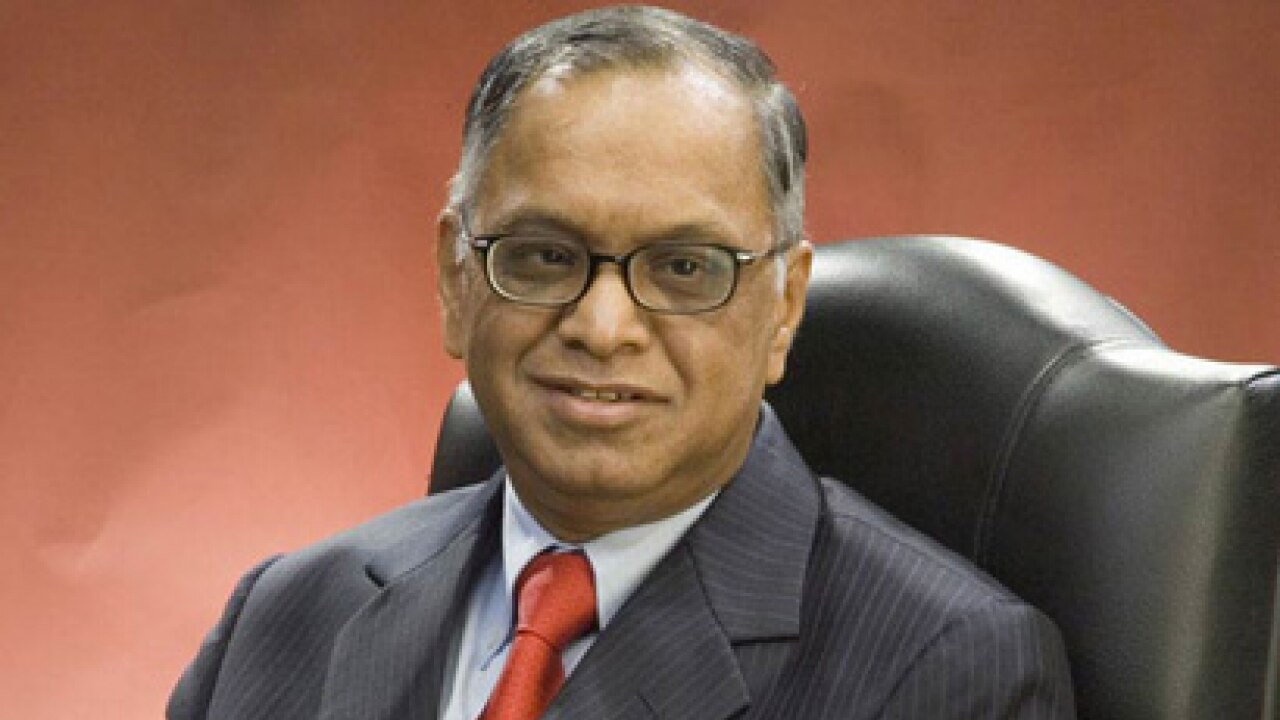
NR Narayana Murthy, who recently stepped away from the hectic life of Infosys, which he helped found three decades ago, is easily one of the best known icons of India’s technology story. In an
interview with DNA, Murthy recounts how technology has touched his life and the journey at Infosys in the last six years, on the occasion of DNA’s sixth anniversary. Edited excerpts:
Which technology innovations during the last six years strike you as milestones?
Significant increase in mobile penetration has led to easy communication, and applications like mobile banking and mobile e-commerce has improved the quality and ease of life. I can find what movies are playing in Bangalore or what restaurants serve what cuisine right from my phone. There is also wider usage of video conferencing in hospitals, educational institutions and in e-governance. Andhra Pradesh and Karnataka chief ministers use it for better collaboration with district collectors. Also, the ministry of corporate affairs now allows directors to attend board meetings through video conferencing. Then, of course, thanks to Skype, my mother — she is 91 — can communicate with her children in the US. My sisters and I use Skype to see and talk to each others several times a week. Thanks to use of technology in e-governance, rural citizens don’t always have to come to capital to get many services. Number of local language TV channels have increased and are available even in remotest villages, giving villagers a chance to see what is happening in the cities.
And how has the journey been at Infosys during the same time?
One of the notable things we did was to apply global delivery model to our consulting practice. We were able to deliver elements of consulting from remote, scalable, cost-competitive locations like India. Another turning point was remote management services, where we manage data centres in various continents from Bangalore. Then, of course, in 2004 we started our consulting group, which helped us connect the board room with the boiler room. Also, with telepresence facility, our senior executives can now avoid travel and hold discussions with colleagues abroad. Better data connectivity and mobile devices such as Blackberry and iPad helps our executives to analyse data and make decisions on the go.
It takes a lifetime to create companies like Infosys, TCS or Wipro. Can you think of companies with similar spark and potential to become big names?
I think Cognizant is coming up pretty well. I can think of Genpact that is doing very well. These are two stellar examples of companies that have come up very well in the last six years.
India has very few software product companies, unlike the West, which boasts of Microsofts and Oracles. Will that change?
Well, at Infosys we have Finacle, which is considered one of the top three banking products. Then there is Tally, the accounting software. But I do think that we need to have more product companies and I think that will happen.
What innovations do you think will become integral part of our everyday life in the next six years?
We have to move to collaborative, distributive sort of decision making. We have to leverage the power of expertise available in different time zones and leverage the prime time available in different time zones. Let’s say we have a project where we use our Chinese colleagues, then our Singapore colleagues, our Japanese colleagues, Indian colleagues, then UK, German colleagues, then New York colleagues and then Los Angles colleagues. If we can use all such talent, the organisation can effectively get a 24-hour work day. We will see more and more mobile decision making, where managers don’t have to sit in the office to analyse data and take decisions. They can be mobile, access data from their iPads and take decisions on the go.
On the personal front, there will be a blurring between the definition of personal use of computing and official use of computing. In other words, I would be able to sit in my office and watch my child at home or switch on and off equipment at home. Sitting in office I can do some of my work at home and sitting at home I can do some of my work in the office.
What shape do you see your life taking in the next six years?
You know even today I spend about 20-22 days a month travelling and attending board meetings in different parts of the world. Therefore, not much is going to change in my life. I would continue to operate out of my home office and I will also continue to spend a little more time at Catamaran. And I will also, hopefully be able to spend more time with my children and grandchildren.
We saw Nandan Nilekani and S Ramadorai move to nation-building roles. Do you expect to see more?
We have to see more of such wonderful examples. We must be grateful to these two gentlemen. But there has to be much more movement between the public sector and the private sector. I believe the example set by these two personalities should inspire others.
Do you envisage any such role for yourself in the next six years?
At this point of time, it is very difficult for me to envisage anything.